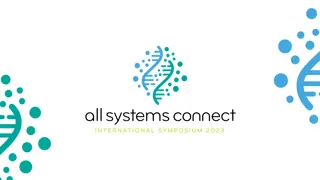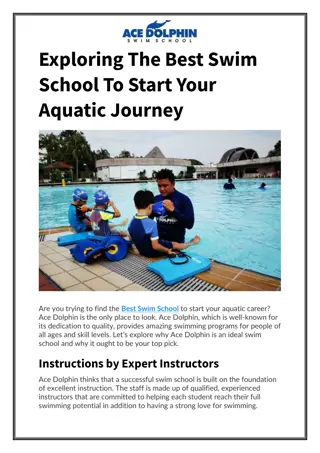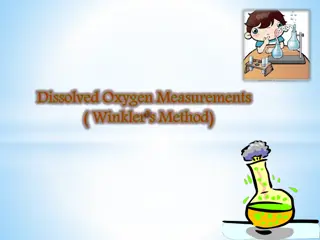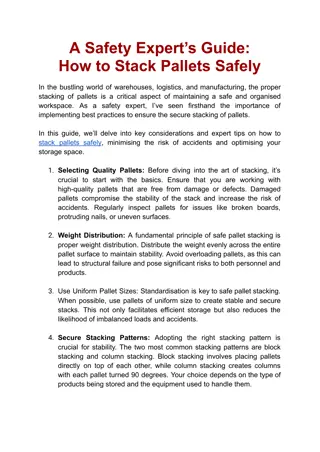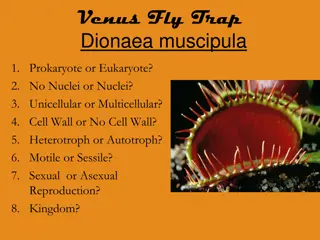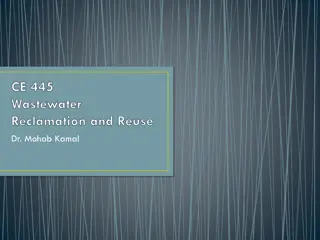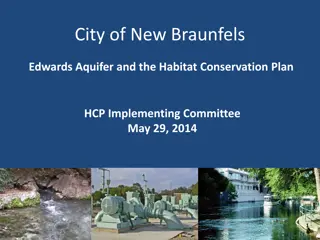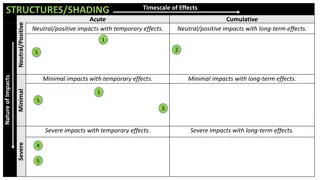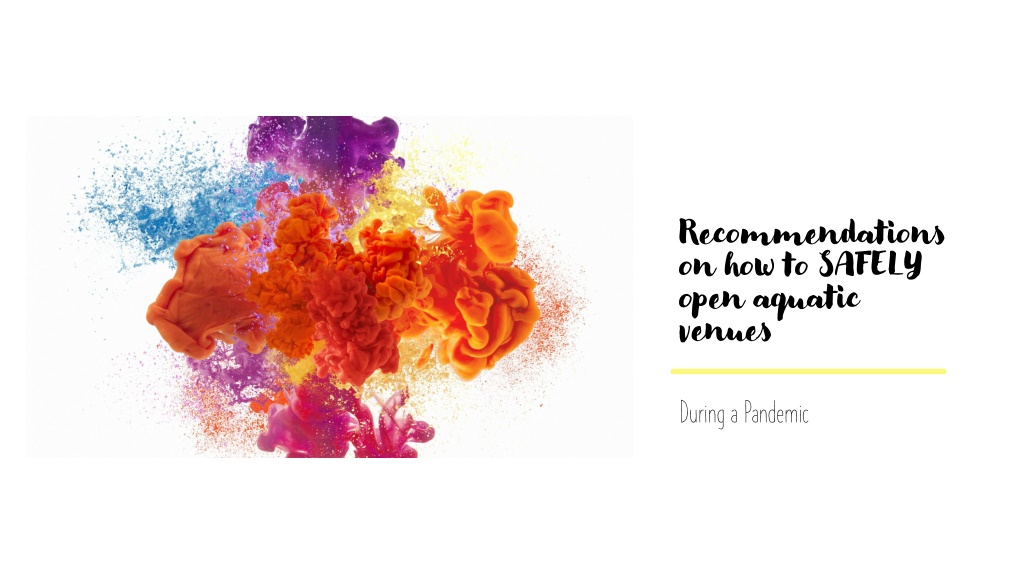
Safely Open Aquatic Venues During a Pandemic
Learn how to safely open aquatic venues during a pandemic by following recommendations from the CDC. Understand the importance of proper cleaning, disinfection, and maintenance to ensure the safety of individuals using recreational water facilities. Wear disposable gloves, clean surfaces with soap and water, then disinfect, and practice routine cleaning of frequently touched surfaces using EPA-registered household disinfectants. Follow guidelines for safe and effective cleaning practices to minimize the risk of COVID-19 transmission.
Download Presentation

Please find below an Image/Link to download the presentation.
The content on the website is provided AS IS for your information and personal use only. It may not be sold, licensed, or shared on other websites without obtaining consent from the author. If you encounter any issues during the download, it is possible that the publisher has removed the file from their server.
You are allowed to download the files provided on this website for personal or commercial use, subject to the condition that they are used lawfully. All files are the property of their respective owners.
The content on the website is provided AS IS for your information and personal use only. It may not be sold, licensed, or shared on other websites without obtaining consent from the author.
E N D
Presentation Transcript
Recommendations on how to SAFELY open aquatic venues During a Pandemic
https://www.cdc.gov/coronavirus/2019-ncov/symptoms- testing/symptoms.html The CDC states: There is no evidence that the virus that causes COVID-19 can be spread to people through the water in pools, hot tubs, spas, or water play areas. Proper operation and maintenance (including disinfection with chlorine and bromine) of these facilities should inactivate the virus in the water. While there is ongoing community spread of COVID-19 of the virus that causes COVID- 19, it is important for individuals as well as owners and operators of these facilities to take steps to ensure health and safety: Everyone should follow local and state guidance that may determine when and how recreational water facilities may operate. Individuals should continue to protect themselves and others at recreational water venues both in and out of the water for example, by practicing social distancing and good hand hygiene. In addition to ensuring water safety and quality, owners and operators of community pools, hot tubs, spas, and water play areas should follow the interim guidance for businesses and employers for cleaning and disinfecting their community facilities.
Wear disposable gloves Wear disposable gloves to clean and disinfect. Clean surfaces using soap and water, Clean surfaces using soap and water, then use disinfectant. then use disinfectant. Cleaning with soap and water reduces number of germs, dirt and impurities number of germs, dirt and impurities on the surface. Disinfecting kills germs Disinfecting kills germs on surfaces. Practice routine cleaning Practice routine cleaning of frequently touched surfaces. More frequent cleaning and disinfection may be required based on level of use. Surfaces and objects in public places, such as shopping carts and point of sale keypads should be cleaned and disinfected before each use. High touch surfaces include: High touch surfaces include: Tables, doorknobs, light switches, countertops, handles, desks, phones, keyboards, toilets, faucets, sinks, electronics, etc. Consider putting a wipeable cover electronics. Follow manufacturer s instruction Follow manufacturer s instruction for cleaning and disinfecting. If no guidance,use alcohol wipes or sprays containing at least wipes or sprays containing at least 70% alcohol 70% alcohol. Dry surface thoroughly. How to Clean and Disinfect https://www.cdc.gov/coronavirus/2019 -ncov/community/disinfecting- building-facility.html reduces wipeable cover on use alcohol- -based based
Recommend use of Recommend use of EPA EPA- -registered household disinfectant disinfectantexternal external icon icon.. Follow the instructions on the label Follow the instructions on the label to ensure safe and effective use of the product. Many products recommend: Keeping surface wet for a period of time (see product label). Precautions such as wearing gloves and making sure you have good ventilation during use of the product. Diluted household bleach solutions may also be Diluted household bleach solutions may also be used used if appropriate for the surface. Check the label to see if your bleach is intended for disinfection, and ensure the product is not past its expiration date. Some bleaches, such as those designed for safe use on colored clothing or for whitening may not be suitable for disinfection. Unexpired household bleach will be effective against coronaviruses when properly diluted. Follow manufacturer s instructions Follow manufacturer s instructions for application and proper ventilation. Never mix household bleach with ammonia or any other cleanser. registered household Leave solution Leave solution on the surface for at least 1 minute. minute. at least 1 How to Clean and Disinfect Continued https://www.cdc.gov/coronavirus/2019 -ncov/community/disinfecting- building-facility.html To make a bleach solution To make a bleach solution, mix: 5 tablespoons (1/3rd cup) bleach per gallon of water OR 4 teaspoons bleach per quart of water Bleach solutions will be effective for disinfection up to 24 hours. Alcohol solutions with at least 70% alcohol may Alcohol solutions with at least 70% alcohol may also be used. also be used.
Cleaning soft surfaces & Laundry https://www.cdc.gov/coronavirus/2019 -ncov/community/disinfecting- building-facility.html For soft surfaces such as carpeted floor, rugs, For soft surfaces such as carpeted floor, rugs, and drapes and drapes Clean the surface using soap and Clean the surface using soap and water water or with cleaners appropriate for use on these surfaces. Launder items Launder items (if possible) according to the manufacturer s instructions. Use the warmest appropriate water setting and dry items completely. OR Disinfect with an EPA Disinfect with an EPA- -registered household disinfectant. household disinfectant. These disinfectantsexternal icon meet EPA s criteria for use against COVID-19. For clothing, towels, linens and other items For clothing, towels, linens and other items Launder items according to the manufacturer s instructions. Use the warmest appropriate water setting and dry items completely. Wear disposable gloves Wear disposable gloves when handling dirty laundry from a person who is sick. Dirty laundry from a person who is sick can be washed with other people s items. Do not shake Do not shake dirty laundry. Clean and disinfect clothes disinfect clothes hampers hampers according to guidance above for surfaces. Remove gloves, and wash hands right away. registered
Cleaning and disinfecting your building or Cleaning and disinfecting your building or facility if someone is sick facility if someone is sick Close off areas Companies do not necessarily need to close operations, if they can close off affected areas. Open outside doors and windows Wait 24 hours as possible. Clean and disinfect all areas used by the person who is sick common areas, shared electronic equipment like tablets, touch screens, keyboards, remote controls, and ATM machines. Once area has been appropriately disinfected Workers without close contact immediately after disinfection. If more than 7 days cleaning and disinfection is not necessary. Continue routing cleaning and disinfection. This includes everyday practices that businesses and communities normally use to maintain a healthy environment. Close off areas used by the person who is sick. Open outside doors and windows to increase air circulation in the area. Wait 24 hours before you clean or disinfect. If 24 hours is not feasible, wait as long all areas used by the person who is sick, such as offices, bathrooms, appropriately disinfected, it can be opened for use Workers without close contact with the person who is sick can return to work can be opened for use. more than 7 days since the person who is sick visited or used the facility, additional
Cleaning and disinfecting outdoor areas Outdoor areas, like playgrounds in schools and parks playgrounds in schools and parks generally require normal routine cleaning normal routine cleaning, but do not require disinfection. Do not spray disinfectant on outdoor playgrounds- it is not an efficient use of supplies and is not proven to reduce risk of COVID-19 to the public. High touch surfaces made of plastic or metal, such as grab bars and railings should be cleaned routinely. Cleaning and disinfection of wooden surfaces (play structures, benches, tables) or groundcovers (mulch, sand) is not recommended. Sidewalks and roads should not be disinfected. Sidewalks and roads should not be disinfected. Spread of COVID-19 from these surfaces is very low and disinfection is not effective. head side mask icon When cleaning Regular cleaning staff Regular cleaning staff can clean and disinfect community spaces. Ensure they are trained on appropriate use of cleaning and disinfection chemicals. Wear disposable gloves and gowns for all tasks in the cleaning Wear disposable gloves and gowns for all tasks in the cleaning process, including handling trash process, including handling trash. Additional personal protective equipment (PPE) might be required based on the cleaning/disinfectant products being used and whether there is a risk of splash. Gloves and gowns should be removed carefully to avoid contamination of the wearer and the surrounding area. Wash your hands often Wash your hands often with soap and water for 20 seconds. Always wash immediately after removing gloves and after contact with a person who is sick. Hand sanitizer: If soap and water are not available and hands are not visibly dirty, an alcohol-based hand sanitizer that contains at least 60% alcohol may be used. However, if hands are visibly dirty, always wash hands with soap and water. Additional key times to wash hands Additional key times to wash hands include: After blowing one s nose, coughing, or sneezing. After using the restroom. Before eating or preparing food. After contact with animals or pets. Before and after providing routine care for another person who needs assistance (e.g., a child). do not require disinfection.
Additional considerations for employers Educate workers Educate workers performing cleaning, laundry, and trash pick-up to recognize the symptoms of COVID-19. Provide instructions on what to do if they developsymptoms within 14 days after their last possible exposure to the virus. Develop Develop policies for worker protection and provide training policies for worker protection and provide training to all cleaning staff on site prior to providing cleaning tasks. Training should include when to use PPE, what PPE is necessary, how to properly don (put on), use, and doff (take off) PPE, and how to properly dispose of PPE. Ensure workers are trained on the hazards of the cleaning chemicals used in the workplace in accordance with OSHA s Hazard Communication standard (29 CFR 1910.1200external icon). Comply Complywith OSHA s standards with OSHA s standards on Bloodborne Pathogens (29 CFR 1910.1030external icon), including proper disposal of regulated waste, and PPE (29 CFR 1910.132external icon).
Day to Day operations with limited use Implement new reduced hours pool schedule for all indoor and outdoor pools. indoor pool swim teams (6-9 Only must meet the social distancing restrictions) & Seniors (9-12). This would be scheduled Monday Fridays (Maybe closing on Wed. in the indoor facility for rec.). Morning outdoor pool lessons (9-12) limiting group sizes to 4 students with 1 instructor and not more than 5 groups. (Lessons would be Monday Thursday with rec. on Fridays. Afternoon 2 sessions 1:00 3:30 & 4:30 7:00 with an hour cleaning time in between each session. We would also require a choice of either the indoor or the outdoor pool use during open swim not allowing going from one facility to another to avoid any cross contaminations. (7 days/week if staffing and restrictions permit.) Lifeguards would also be assigned for the day to the outdoor or indoor pool. Cut bather-loads to 50% - 20% (Alb. Parks and Rec. is proposing 20%. I am sure NMEPD will probably set a max. and we can determine what we want at that time.) At 20% the bather loads would look like the following: Indoor Dive Pool = 12 people (11.4); Indoor Comp. Pool = 1 per lane = 10 swimmers at a time (10 lanes) Lane lines create a social distancing. We could also do lane lines by appointment.; Outdoor Pool would have a bather load of 56 people (55.4) Limit Lap swimmers per lane Swim team times spread out to meet capacity limitations.
Day to Day disinfection Sanitized equipment given upon arrival All kickboards or rescue tubes would be disinfected after each use along with lifeguard chairs On breaks or on rotation each guard would clean all hard surfaces in each bathroom and handrails. Utilize UV Sterilization on chairs and outdoor equipment Cleaning/ Disinfecting Rotations done by lifeguards, wearing proper PPE Deep Cleaning after every shift Sanitation Stations (spray bottles of bleach, to use at customers discretion) Posted sanitation schedule in customer view
Safety Operations Separate entrance and exit to follow distancing Taped Markings 6 apart for entrance line Maintain 6 social distancing for all patrons out of the water. Automatic entrance/exit doors No spectators, or distanced seating No shared pool toys or equipment Automatic showers Every other shower head in use (distancing) Must wear shoes in shower/ locker room Shower enforcements by lifeguards before exiting the locker room No private rentals, swim meets, birthday parties, or special events during 2020 summer season.


